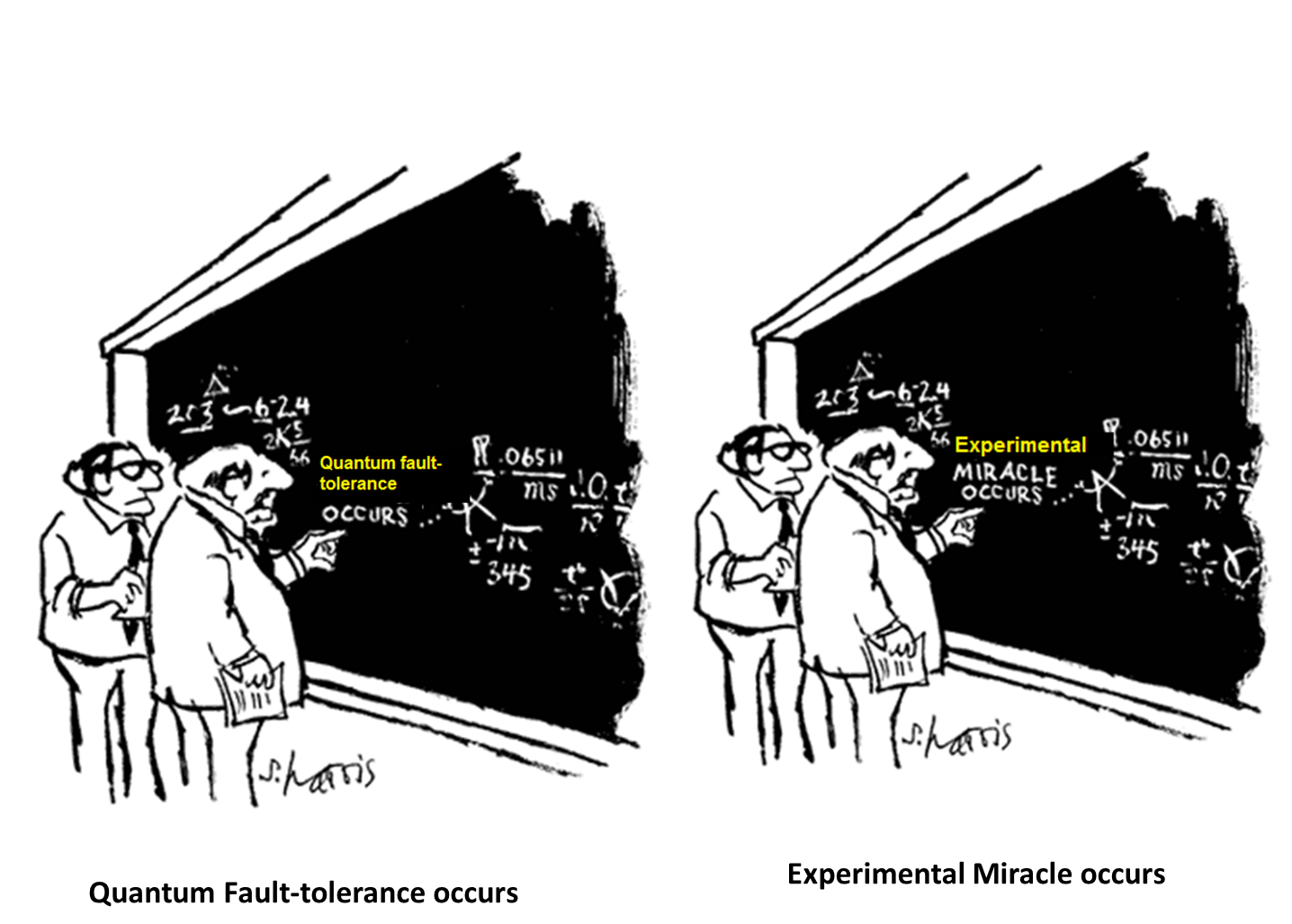I said it publicly today. Several people told me they were glad to hear it.
Majorana fermions are fascinating from a fundamental science point of view. They are worth investigating by a few theoretical and experimental groups. However, they are the latest fashion that is taking the solid state and quantum information communities by storm. It is the latest exotica. Much of the justification for all this research investment is that Majorana fermions could be used for "fault tolerant" quantum computing.
Lets get real. Lets not kid ourselves. First, as far as I am aware, no one has even demonstrated yet that the relevant solid state "realisations" even exhibit Majorana statistics. Suppose they do. Maybe in a few years someone will have 2 qubits. Looking at the complicated nanoscale devices and fabrication needed I fail to see how on any reasonable time scale (decades?) one is going to produce say 6-8 qubits. Yet even that is just a quantum "abacus", a toy.





What about this recent publication? It seems to be more convincing to me than the transport-based experiments in the past.
ReplyDeletehttp://www.sciencemag.org/content/346/6209/602.abstract
Glad that someone said it!
ReplyDeleteSoggybomb:
ReplyDelete-Showing evidence consistent with the presence of Majorana Fermions does not constitute a falsification of the statement in the title of this post.
-Scanning tunneling spectroscopy is transport-based.
-Moreover, if one aims at quantum computation, any system that requires atomically precise positioning of a dozen or so atoms on an atomically clean surface (and then still needs hook-ups to the outside world) is nowhere near more convincing on the path towards computation than an approach based on contacted semiconductor nanowires that actually have demonstrated to survive handling (i.e. device making). And this is from an avid STM person...
While I think I have to agree with the title of the post, I do think studying quasiparticles with exotic statistics is a worthwhile endeavour; history shows we've learned a lot from doing exactly that, whether it is in condensed matter or not.
Although I remain optimistic about the ultimate goal, it does seem that fundamental science that makes it way into widespread technological use generally occurs rapidly. This is likely because only if engineering challenges can be met quickly in the lab, is the phenomenon stable enough to be scaled up into production. This has been the case from lightbulbs to the transistor to GMR based sensors. I can't think of a now widespread technology that took years and years to work out even the basic kinks much less the fundamental science. Are there examples?
ReplyDelete